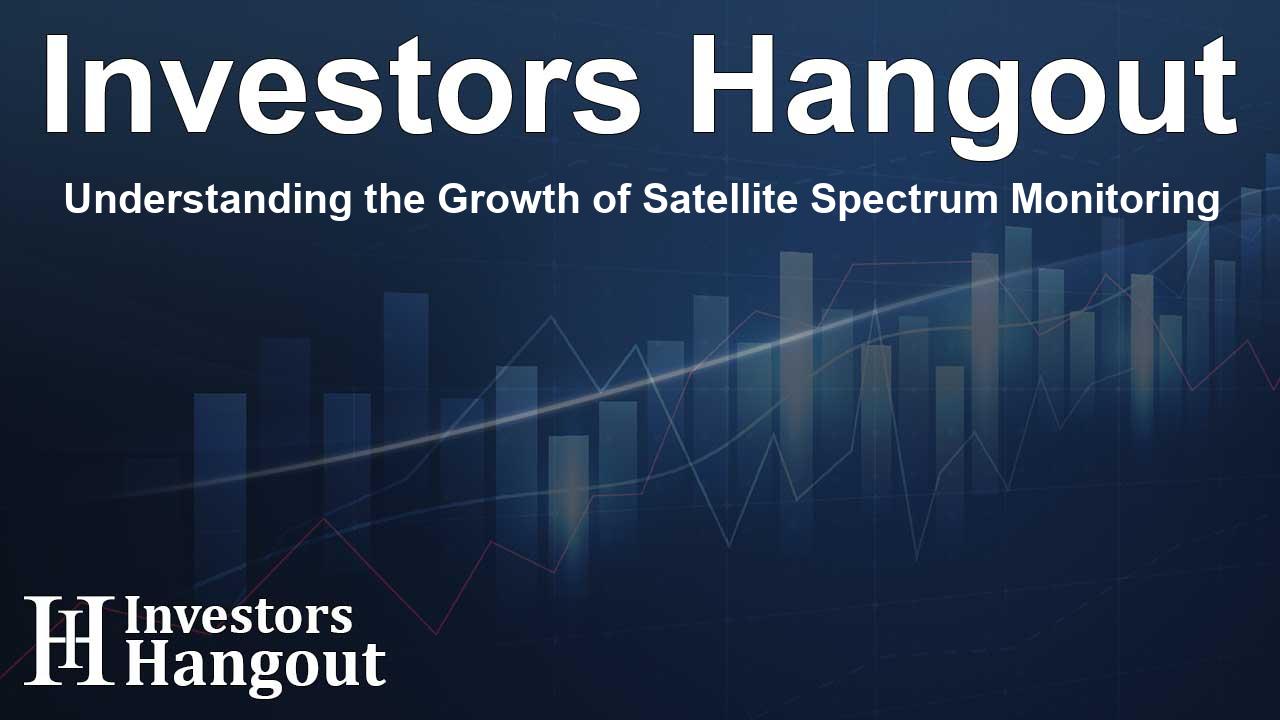Understanding the Growth of Satellite Spectrum Monitoring

Growth of Satellite Spectrum Monitoring Market
The Satellite Spectrum Monitoring System plays a crucial role in enhancing the operational efficiency of satellite communication by monitoring the spectrum of each satellite uplink or downlink. This innovative system not only identifies harmful interference but also aids in pinpointing the source of such interference, ensuring optimal satellite performance. The rising global demand for reliable satellite monitoring is a key facet of the ongoing evolution in the satellite industry.
Driving Factors Behind Market Expansion
The surge in the space industry can be attributed to a combination of government initiatives and significant investments from private sectors worldwide, fueling its rapid growth. Industry insights reveal that the global space economy was valued at approximately $371 billion, underscoring the massive economic potential of this sector.
Increasing Spectrum Congestion
The worldwide digital transformation is leading to an exponential rise in internet users, significantly contributing to the data generated across the globe. Consequently, this surge in data is causing the satellite spectrum to become increasingly congested. A report indicated that by 2021, around 5.2 billion people were utilizing the internet, further intensifying the competition for spectrum resources. This has spurred a growing demand for advanced satellite spectrum monitoring solutions.
Impact of SATCOM on Signal Interference
The proliferation of satellite communication (SATCOM) technologies has escalated signal interference issues, a contributing factor to the expansion of the satellite spectrum monitoring market. As the demand for reliable signal transmission grows, so does the need for effective monitoring strategies that can mitigate interference challenges. Innovative technologies such as reusable launch vehicles and advanced electronic structures are even being developed to address these issues.
Shift Towards Cloud-Based Monitoring Solutions
Recent advancements in technology have prompted a shift to cloud-based solutions for satellite spectrum monitoring. By enabling real-time data sharing between monitoring stations, this collaborative approach strives to enhance system performance. The integration of cloud computing within the monitoring process allows for a more streamlined and efficient flow of data while reducing the reliance on traditional communication networks.
Market Projections and Expected Growth
Market forecasts indicate that the satellite spectrum monitoring market was valued at approximately USD 3.21 billion in 2024, with projections suggesting it could reach up to USD 6.07 billion by the year 2033. This anticipated growth reflects a healthy compound annual growth rate (CAGR) of 7.32% throughout the forecast period. The increasing necessity for precise spectrum management is at the heart of this expansion.
Regional Insights
In North America, the satellite spectrum monitoring market held an impressive valuation of $1,291.2 million in recent years and is projected to grow steadily at a CAGR of 7.0% from 2021 to 2030. This growth is attributed to the concentration of leading firms that are actively innovating and implementing satellite spectrum monitoring solutions in the region.
Understanding Market Segmentation
The satellite spectrum monitoring market can be divided across various segments, each contributing uniquely to the overall growth trajectory:
- By End User: The market encompasses several critical sectors including aerospace, oil and gas, maritime, military, government, and media & entertainment, each demanding tailored spectrum management solutions.
- By Frequency: The frequency segmentation includes various classifications such as Very High Frequency (VHF), Ultra-High Frequency (UHF), Super High Frequency (SHF), and Extremely High Frequency (EHF).
- By Solution: This market categorization is divided into hardware and software solutions, with hardware components accounting for the majority revenue share.
Key Competitors
Some prominent players in the satellite spectrum monitoring market include:
- Avcom of Virginia Inc.
- Anritsu Corporation
- Keysight Technologies Inc.
- Kratos Defense & Security Solutions Inc.
- ST Engineering iDirect
- National Instruments Corporation
- Calian Group Ltd.
- Advanced Technologies
- Integrasys S.A.
- Narda Safety Test Solutions
- Rohde & Schwarz GmbH & Co.
Recent Innovations in the Market
Recent developments highlight the ongoing innovation within the market, such as the launch of the Field Master Pro MS2090A by Anritsu Corporation, designed specifically for military applications, and the introduction of the fourth-generation Decimator D4 by Calian Group Ltd. Another notable advancement includes Kratos securing an $11.5 million contract aimed at developing a cutting-edge space radio monitoring system for federal applications, further displaying the industry's commitment to safeguarding satellite communications.
Conclusion
As the satellite spectrum monitoring market continues to evolve, it remains crucial for stakeholders to adapt to the shifting technological landscape, enabling them to address the challenges of congestion and interference. By ensuring seamless satellite communication through innovative monitoring solutions, the sector is poised for sustained growth and influence on global communications.
Frequently Asked Questions
What is the projected growth of the satellite spectrum monitoring market?
The satellite spectrum monitoring market is expected to grow from USD 3.21 billion in 2024 to USD 6.07 billion by 2033, reflecting a CAGR of 7.32%.
What factors are contributing to the rising demand for satellite monitoring?
The increasing number of internet users and data generation, along with the proliferation of SATCOM technologies, are primary factors driving demand.
Which industries are involved in satellite spectrum monitoring?
Key sectors include aerospace, military, oil and gas, government, and media & entertainment, each requiring specialized monitoring solutions.
How does cloud technology enhance satellite monitoring?
Cloud technology allows for real-time data sharing among monitoring stations, improving efficiency and reducing reliance on traditional networks.
Who are the key competitors in the satellite spectrum monitoring market?
Major competitors include Anritsu Corporation, Keysight Technologies Inc., and Kratos Defense & Security Solutions Inc., among others.
About The Author
Contact Thomas Cooper here.
About Investors Hangout
Investors Hangout is a leading online stock forum for financial discussion and learning, offering a wide range of free tools and resources. It draws in traders of all levels, who exchange market knowledge, investigate trading tactics, and keep an eye on industry developments in real time. Featuring financial articles, stock message boards, quotes, charts, company profiles, and live news updates. Through cooperative learning and a wealth of informational resources, it helps users from novices creating their first portfolios to experts honing their techniques. Join Investors Hangout today: https://investorshangout.com/
The content of this article is based on factual, publicly available information and does not represent legal, financial, or investment advice. Investors Hangout does not offer financial advice, and the author is not a licensed financial advisor. Consult a qualified advisor before making any financial or investment decisions based on this article. This article should not be considered advice to purchase, sell, or hold any securities or other investments. If any of the material provided here is inaccurate, please contact us for corrections.
